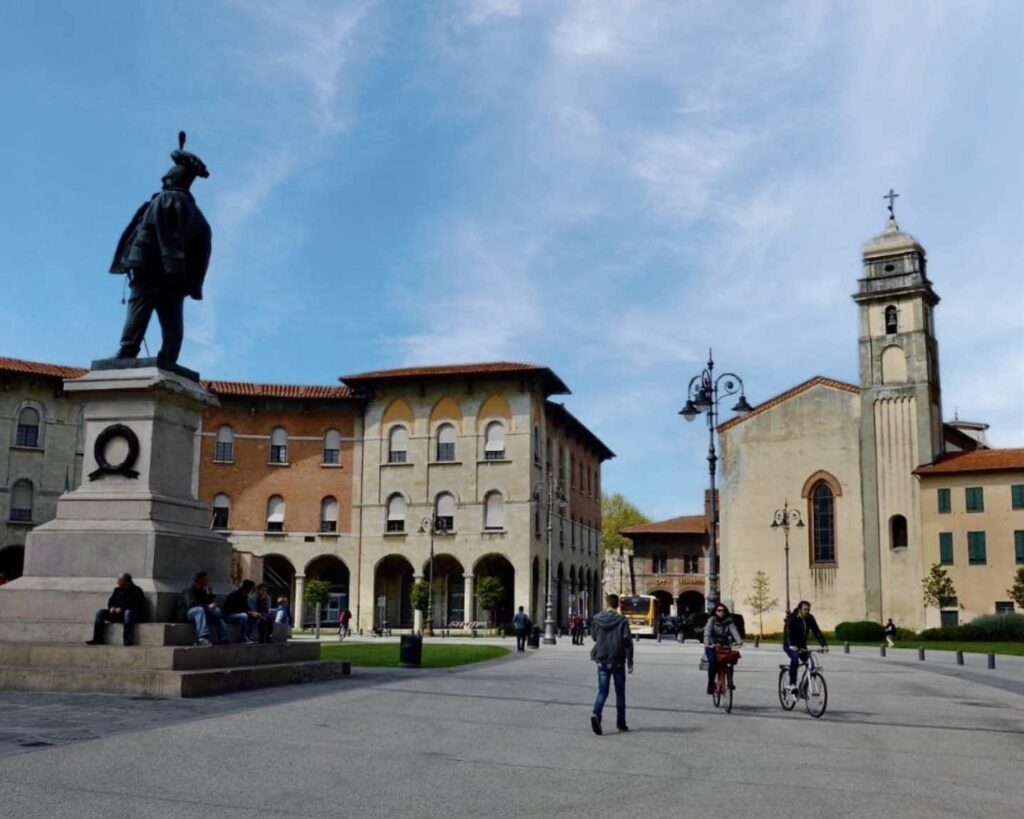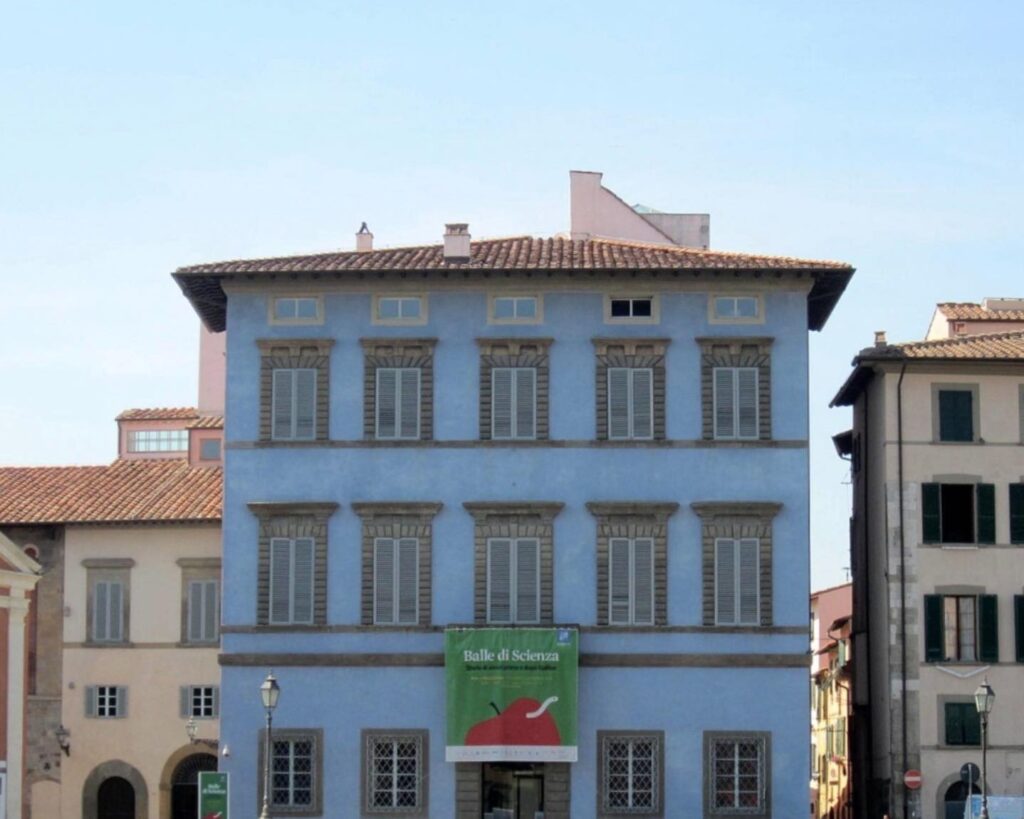.
.
Pisa
16 Best Things to See and Do in Pisa
Pisa’s name comes from a Greek word for ”marshy land” It means that land is composed of clay, sand, and mud, Pisa is well known for its iconic leaning tower and besides the fact that it has a relatively short and poor foundation, this is one of the reasons why the tower started to lean short after it was constructed. If you are planning to visit Italy, especially the Tuscan region, you shouldn’t miss the opportunity to take a photo of yourself with a tilted hand ”holding up” the Tower of Pisa.
However, Pisa is more than its learning landmark, you might not know that there is a UNESCO World Heritage site in Pisa called Piazza dei Miracoli, and the famous astronomer Galileo Galilei was born in Pisa in 1564. Pisa is rich in history, culture, and architectural wonders that attract visitors from around the world, this town is highly recommended to visit if you’re planning to go to Italy. Especially, just like I did, it can be a great plan for a day trip from Florence as it is very close and very well connected.
1. Your first Piazza to start

Right next to the main train station, you will see this beautiful Piazza di Vittorio Emanuele II, dedicated to Italy’s first king. It is a very nice area with many cafes and shops to explore and, it can be a great starting point to get to know Pisa.
2. Street artwork “Tottomondo”

Tuttomondo, translating to “All World” in English, is a monumental mural with joyful dancing figures and characters, each expressing a unique aspect of a peaceful world. This beautiful graffiti was made by the American artist Keith Haring in 1989, it is a unique work in the world and, one of the largest murals ever made in Europe.
You can not miss it as it is right next to the Piazza di Vittorio Emanuele II, on the rear wall of the Church of Sant’Antonio Abate.
3. Palazzo Blu

Head to see the Palazzo Blu of Pisa, built in the 14th century, it was painted in Blue in the 18th century to please the gusts from Saint Petersburg who were staying here.
It houses many interesting paintings from the 14th century to the 18th century and, photographs documenting life in Pisa in the 20th century.
4. Walk along the Arno River

Explore hidden gems of the riverbanks and capture memorable photos of the Arno River. Walking along the Lugarini street on the sides of the River could be a very interesting experience. Cross the Solferino Bridge and enjoy the views of the Guelph Tower, where Pisanos used to make ships.
Some visitors also like to do picnics or simply sit on the banks of the Arno to enjoy the atmosphere.
5. Church of Santa Maria della Spina

As you stroll along the Arno River, take a moment to appreciate the Gothic elegance of Santa Maria della Spina. Originally constructed in 1230, this small but exquisite church stands as a testament to the city’s rich cultural and artistic heritage, preserving its medieval charm, characterized by pointed arches, intricate detailing, ornate sculptures, adorned with statues, rosettes, showcasing the craftsmanship of the medieval builders.
6. Piazza Garibaldi

This square is named after the iconic Italian general Giuseppe Garibaldi, and, proves residents and visitors blend of cultural, social, and culinary experiences.
Historic buildings with traditional Tuscan facades coexist harmoniously with more modern structures. Here you can find many seasonal concerts and, festive, numerous shops, cafes, and restaurants, what makes Piazza Garibaldi truly special is its role as a space for community engagement.
7. San Matteo Museum

It was originally founded in the 11th century and, it is located in the ancient San Matteo complex. San Matteo Museum continues to play a vital role in preserving and showcasing Pisa’s cultural heritage, it showcases an impressive collection of sculptures, paintings, and decorative arts from different periods of Pisan history. Visitors can see works of renowned artists such as Giovanni and Andrea Pisano, Simone Martini, and Francesco Traini. The museum’s exhibits provide a comprehensive view of the evolution of Pisan art from the Middle Ages to the Renaissance.
8. Shopping Streets

From historic markets to trendy boutiques, the city’s shopping areas provide a diverse and vibrant choice for those seeking unique and authentic Italian finds.
Borgo Stretto is a narrow street that adds a touch of a true medieval atmosphere. Here, travelers can explore a variety of shops offering fashion, accessories, and, souvenirs.
9. Piazza dei Cavalieri

This splendid square has played an important role in the city’s transformation over the centuries from a Roman forum to a political and academic center. The largest building on the square is The Scuola Normale Superiore which today is Italy’s leading institution of higher education, originally founded by Napoleon. In front of the building you can admire the statue of Cosimo I, head of the Medici family, who spent a lot of time in Pisa, he also built the Saint Stephen building on the square, which served as the headquarters of the nobleman. The square remains a gathering place for locals and tourists, ceremonies, events, and academic functions.
10. Palazzo dell’Orologio or the Clock Palace

Near the Piazza dei Cavalieri it is recommendable to stop at the Palazzo dell’Orologio to admire its beauty, the Palace was originally constructed as a residence for a noble Pisan family, but it later became the seat of the powerful Medici family during their dominance in the 16th century.
Visitors can admire the intricate details of the exterior, the clock adorning the palace is a key feature and, adds a distinctive charm to the building’s exterior, and the most important painting inside is Dande’s Divine Comedy from the Renaissance era.
11. Leaning Tower of Pisa

The iconic leaning Tower of Pisa remains a must-visit destination for travelers around the world, it stands at the Piazza dei Miracoli which, as we mentioned before, is a UNESCO World Heritage Site.
Pisa Tower is considered a monument to the beauty of imperfection, It was stabilized by engineers in 2008, and they said it will not move for at least 200 years. The Tower is 55 meters, with a total of eight stories, adorned with intricate sculptures and artwork, classical columns, and arches. Visitors can ascend the tower’s spiral staircase and enjoy panoramic views of Pisa.
12. Cathedral of Santa Maria Assunta

Next to the Pisa Tower, you will see the beautiful Cathedral of Santa Maria Assunta, commonly known as the Pisa Cathedral, it is a true architectural marvel, the cathedral’s facade is adorned with intricate sculptures and geometrical patterns, and it is a harmonious blend of Romanesque and Gothic elements and, captures the essence of medieval Pisa.
13. Pisa Baptistery

Another must-visit building on the Piazza dei Miracoli is The Baptistery, also with a unique blend of two architectural styles, with the Romanesque style on the lower part and, the Gothic on the upper part. It has a distinctive circular form that creates exceptional acoustics, visitors are often captivated by sounds within its walls.
The Pisa Baptistery has witnessed centuries of baptisms, symbolizing the spiritual journey of many people and it underscores its important role in the religious life of Pisa.
14. Two Museums next to the Piazza dei Miracoli

The Museum of Sinopie is not to be missed when visiting Pisa, it has a beautiful display of Sinopies, the preliminary sketch paintings that take you to the evolution of art from conception to completion.
The Museum of Opera del Duomo is another great place to visit here, it showcases a vast collection of art and treasury, the museum concentrates on countless medieval statues that adorned the Cathedral and Baptistery.
15. Pisa City Walls

Pisa’s City Walls stand as guardians of the city’s past, its construction began during the 12th century to fortify against potential threats.
The medieval builders exhibited a keen understanding of military architecture, the walls with their watchtowers and gates were strategically designed to encircle the heart of Pisa, protecting its inhabitants against external invasions.
Today, locals and visitors can stroll along the ancient stones, walking along the walls provides not only a historical journey but also panoramic views of the city.
16. Botanical gardens

Botanical Gardens of Pisa was founded in the 15th century, to cultivate medicinal plants and advance the understanding of botany. Over the centuries, the garden has evolved, expanding its collection and embracing diverse plant species from around the world.
this botanical haven is not only one of the oldest botanical gardens in Europe but also a living testament to Pisa’s commitment to the study and preservation of plant life. This place provides a great atmosphere to respite from the bustling city, It hosts plants from the five continents and invites visitors to admire and connect with the natural world.
In Conclusion:
I tried to cover all the places I visited and, I would recommend you to see in this beautiful coastal town of Italy, as you can see it is a small city. Still, it has a lot to offer, and depending on the time you spend here, you might discover many other places not mentioned in this article. Whether climbing Pisa’s famous Leaning Tower, strolling along the Arno River, or enjoying the city’s diverse offerings, you will have a great and pleasant experience here.
*Important note: Please remember to check for the restrictions or any other changes while planning your trip.
Feel free to reach out if you have any questions.